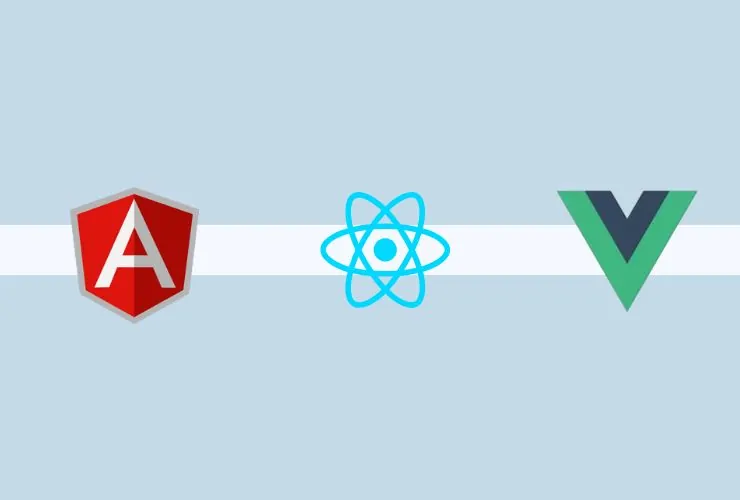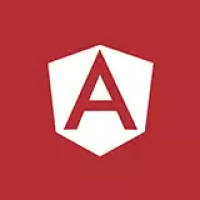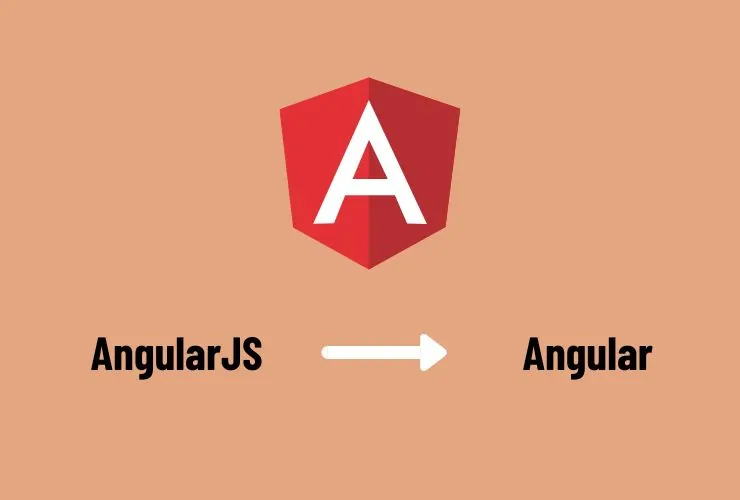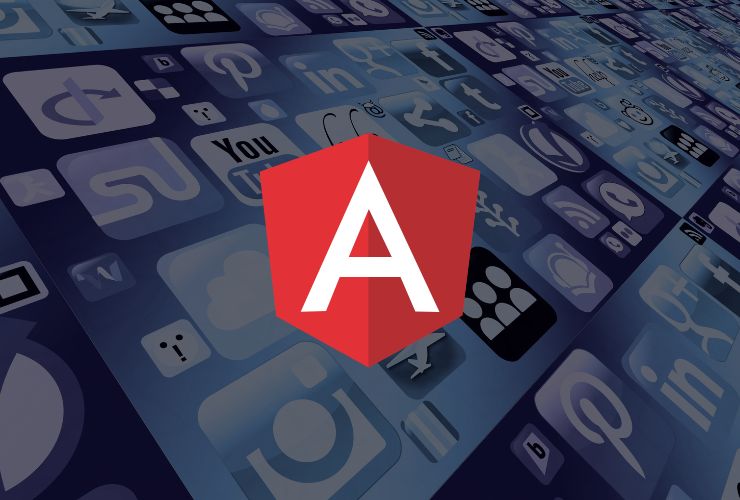In web application development in today’s time, front-end frameworks are not a rare commodity to web developers. Some of the most widely used ones include Angular, React, and Vue. The three are unlike each other in nature, have different performance advantages, and each has its own isolated ecosystem. With the wealth of options to choose from, it can be difficult to pick the best one for your next web development endeavor.
In this detailed comparison, we’ll look at Angular, React, and Vue from multiple angles: ease of use, performance, scalability, community support, and best use cases. By the end of this blog, you’ll have a clear understanding of which framework suits your needs.
1. Angular: The Full-Featured Framework
Overview:
Angular is a highly featured, opinionated framework from Google for creating dynamic single-page applications (SPAs). As a full-featured framework, Angular comes loaded with everything needed to develop complex apps, making it an end-to-end solution for enterprise-level projects.
Angular provides built-in amenities for routing, form validation, HTTP requests, dependency injection, etc. All these varied tools enable developers to develop complex apps at a faster pace.
Strengths
Full Package: Everything that you need to develop sophisticated applications is bundled within Angular. Starting from state management to routing, the platform has a full package where the developers do not have to incorporate third-party libraries.
Two-Way Data Binding: Two-way data binding is the most important aspect of Angular, where the UI updates automatically reflect in the data model and vice versa.
TypeScript Integration: TypeScript is utilized to create Angular and is a statically typed super-set of JavaScript. TypeScript includes type-checking, better tooling, and better IDE support in order to better the development experience and less error.
Enterprise-Level Solution: Angular is ideal for big-scale, enterprise-level applications. Angular’s robust framework and mature set of features make Angular an excellent solution for enterprise applications and large groups of organizations.
Modular Structure: Angular utilizes modules in structuring and concealing functionality, thus making projects simpler to maintain and expand.
Weaknesses:
Steep Learning Curve: Angular is a complex framework with many concepts and tools to master, such as directives, services, and dependency injection. It will take some time to get used to it, especially for beginners.
Heavyweight: Native Angular features add to file size, thus making it a heavier choice than other lightweight libraries such as React and Vue. This can affect initial load time and performance.
Best For
Enterprise-scale large applications, where scalability and full solution requirements are of greater importance than framework complexity.
2. React: The Flexible Library
Overview
React is a JavaScript library developed by Facebook to construct user interfaces. Unlike Angular, React handles only the view layer, while other tasks (e.g., state management, routing, etc.) require other libraries or your own implementation. It is this modularity that makes React lightweight and adaptable in creating interactive UIs.
React’s component-based architecture allows developers to build reusable and composable UI components, which makes it simpler for them to develop data-driven, dynamic applications.
Advantages:
Component-Based Architecture: React allows developers to divide the UI into reusable components. This enhances code reusability as well as maintainability because components can be reused in the app in various locations.
Virtual DOM for Performance: React utilizes a Virtual DOM (a light representation of the actual DOM) to render in an efficient manner. React renders only the parts of the UI that have been updated, which accelerates the app’s performance and avoids over-re-rendering.
Rich Ecosystem: React possesses a very extensive ecosystem of third-party libraries and tools. It has easy integrations with other well-known libraries like Redux (for state management), React Router (for routing), and Next.js (for server-side rendering).
Overwhelming Community and Support: As one of the most used JavaScript libraries, React has a very large community. There is plenty of documentation, tutorials, and support available, so it’s easy to find solutions for common problems.
SEO Support: React can create server-side rendered (SSR) applications that improve SEO performance by helping search engines index page content more effectively.
Weaknesses
Not a Full Framework: React is not a full framework like Angular. It is just a library for building user interfaces. Developers must add other libraries and tools (e.g., Redux for state or React Router for routing) to create a full app.
Learning Curve for Advanced Topics: Although React is extremely easy to begin with, complex topics like hooks, context API, and state management with Redux are overwhelming for newcomers.
Best For:
Projects based on flexibility, projects based on modularity, and projects based on scalability, especially when you require a tailored, high-performance UI.
3. Vue: The Progressive Framework
Overview:
Vue is an incrementally written JavaScript framework by Evan You. This is incrementally adoptable, and hence developers can incrementally use it to make things better in an existing application or even build a complete application from scratch. Vue is flexible, easy to use, and easy to integrate.
Vue is an extremely flexible framework that gives the core capability of reactivity, a component-based approach, and routing but never locks developers into a strict development pattern. This is because it is best suited for teams who want the freedom in how they build their applications.
Strengths
Ease of Use and Simplicity: Vue is simpler to learn than React and Angular. Its syntax is simple to learn, and its documentation is one of the best in front-end frameworks and thus best suited for beginners and small applications.
Reactivity and Flexibility: Vue’s reactive data binding gives a simple way to keep the UI in sync with the application state with less explicit DOM manipulations.
Single-File Components: Vue has single-file components in which HTML, CSS, and JavaScript can all reside in a single file. This keeps the codebase of the application neat and tidy.
Good Documentation: The documentation of Vue is extremely complete and newbie-focused, which allows developers who are migrating from other frameworks or are newbies to JavaScript to use it with more ease.
Modular Ecosystem: Vue has the advantage of having an ecosystem of libraries such as Vue Router for routing, Vuex for state management, and Vue CLI for project setup, so it’s a very flexible framework for any project.
Weaknesses:
Smaller Ecosystem: Although the Vue ecosystem is expanding, it still lags behind React and Angular. You might find fewer third-party libraries and tools written specifically for Vue.
Limited Corporate Support: While Angular enjoys Google support and React enjoys Facebook support, Vue does not have the support of a large corporation. Therefore, some companies have questioned whether it is long-term sustainable, even though Vue has been very successful and very well-supported in the community.
Best For:
Small- and medium-sized applications, especially those that require a lightweight, easy-to-understand framework that can grow as needed.
Angular vs. React vs. Vue: What to Use?
Select the suitable framework for your project based on many factors, including project size, team expertise, and how it will develop in the future. Below is a brief guide:
Select Angular if you require a feature-complete, enterprise-level solution and your team already knows its complex nature. Angular is suitable for big projects with huge architecture and feature-complete toolkit.
Opt for React if you require flexibility and performance. React is ideal for applications that prioritize building interactive UIs with customized layouts. It’s also a great choice if you want to use server-side rendering (SSR) to boost SEO.
Select Vue if you prefer something straightforward to learn and implement in your project. Vue is ideal for users who enjoy simplicity, adaptability, and less documentation, particularly for medium to small apps.
Conclusion
There isn’t a one-fit solution when making the choice among Angular, React, and Vue. All the three frameworks have their strengths as well as limitations, and whichever will be appropriate for you is dependent upon what kind of project you’re creating, what expertise level your group has, as well as needs of the application. Whether you’re building a large-scale enterprise application, a high-performance user interface, or a light-weight solution, these three frameworks provide you with the tools and features you’ll need to achieve your goals.














